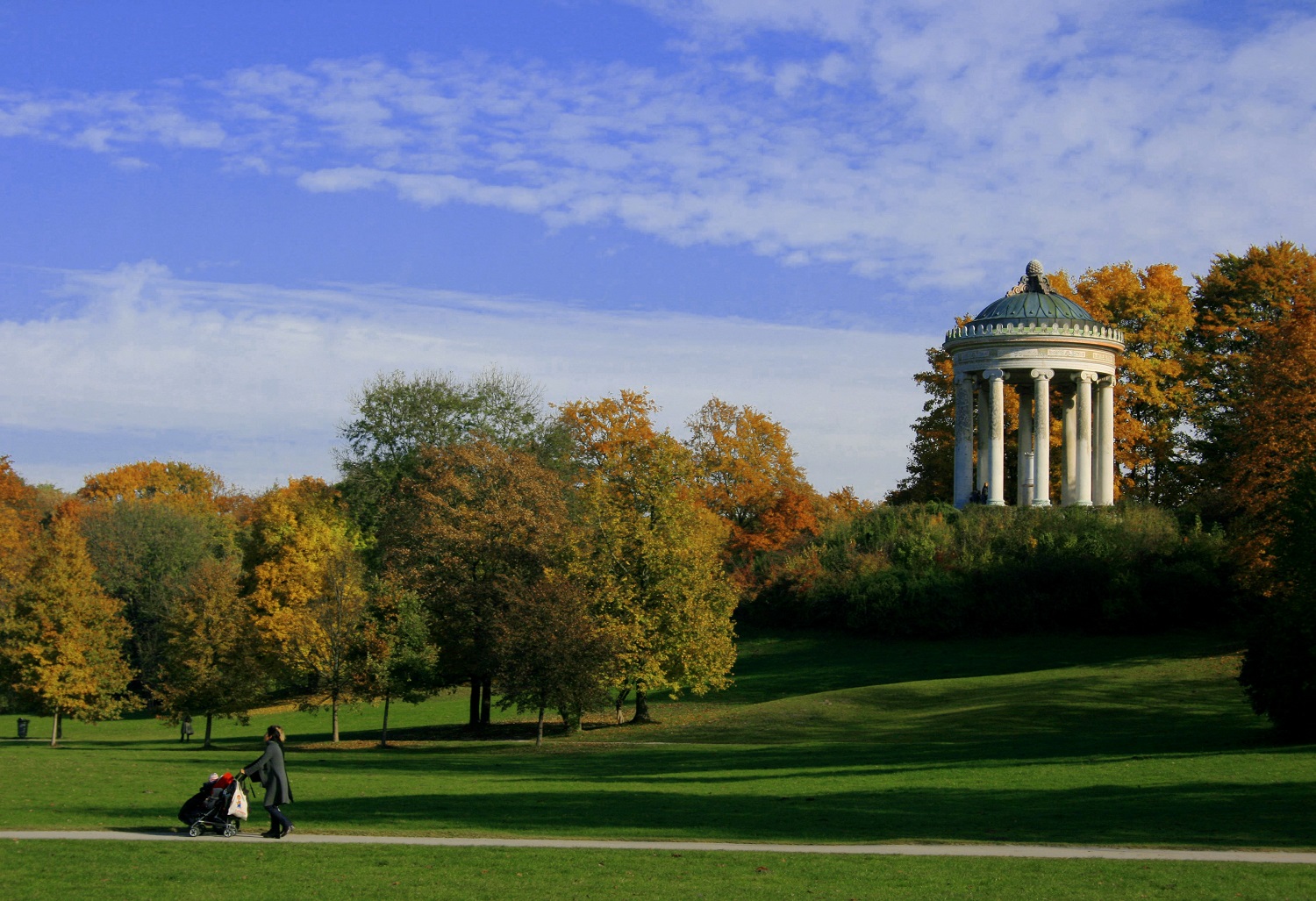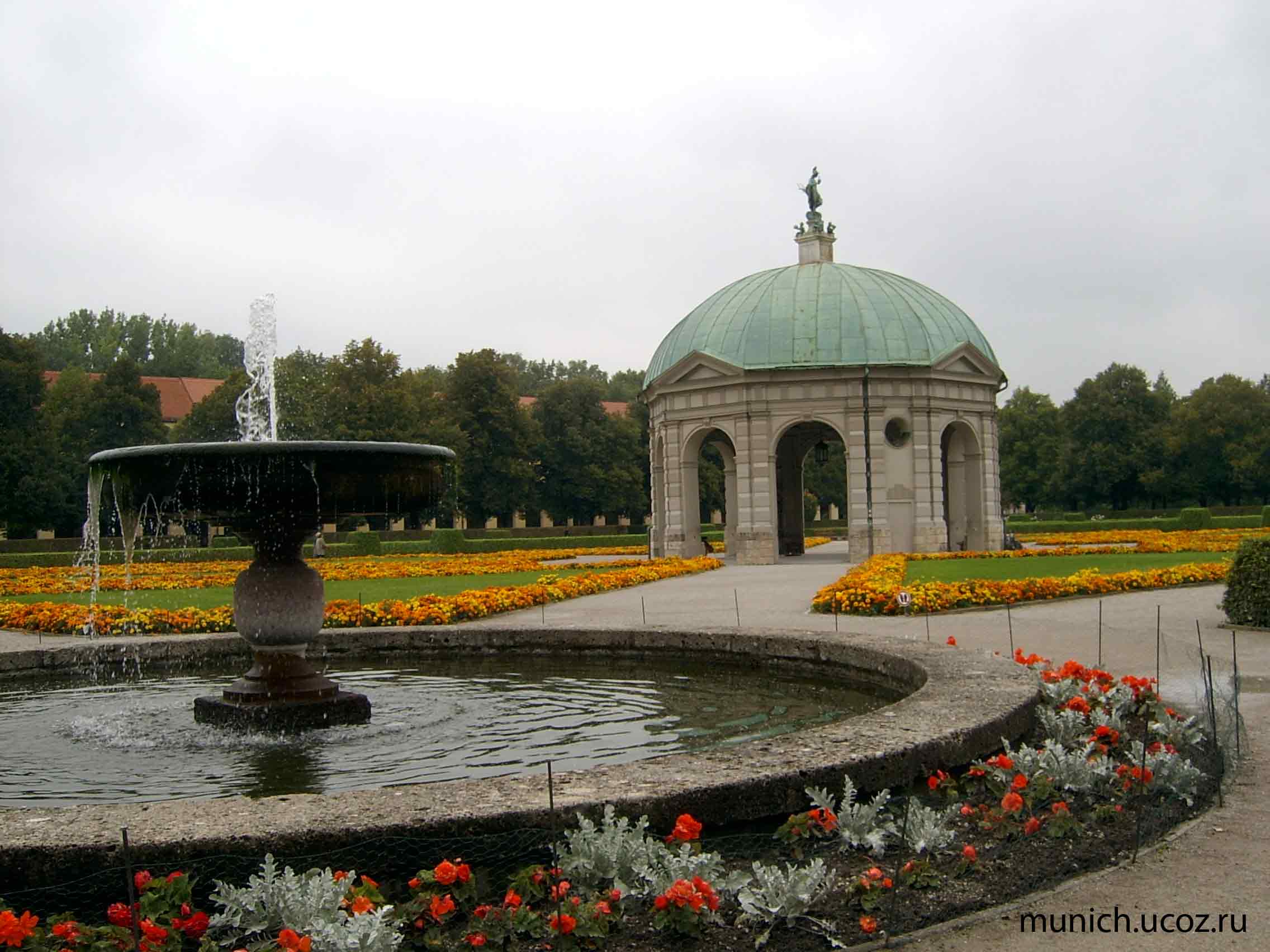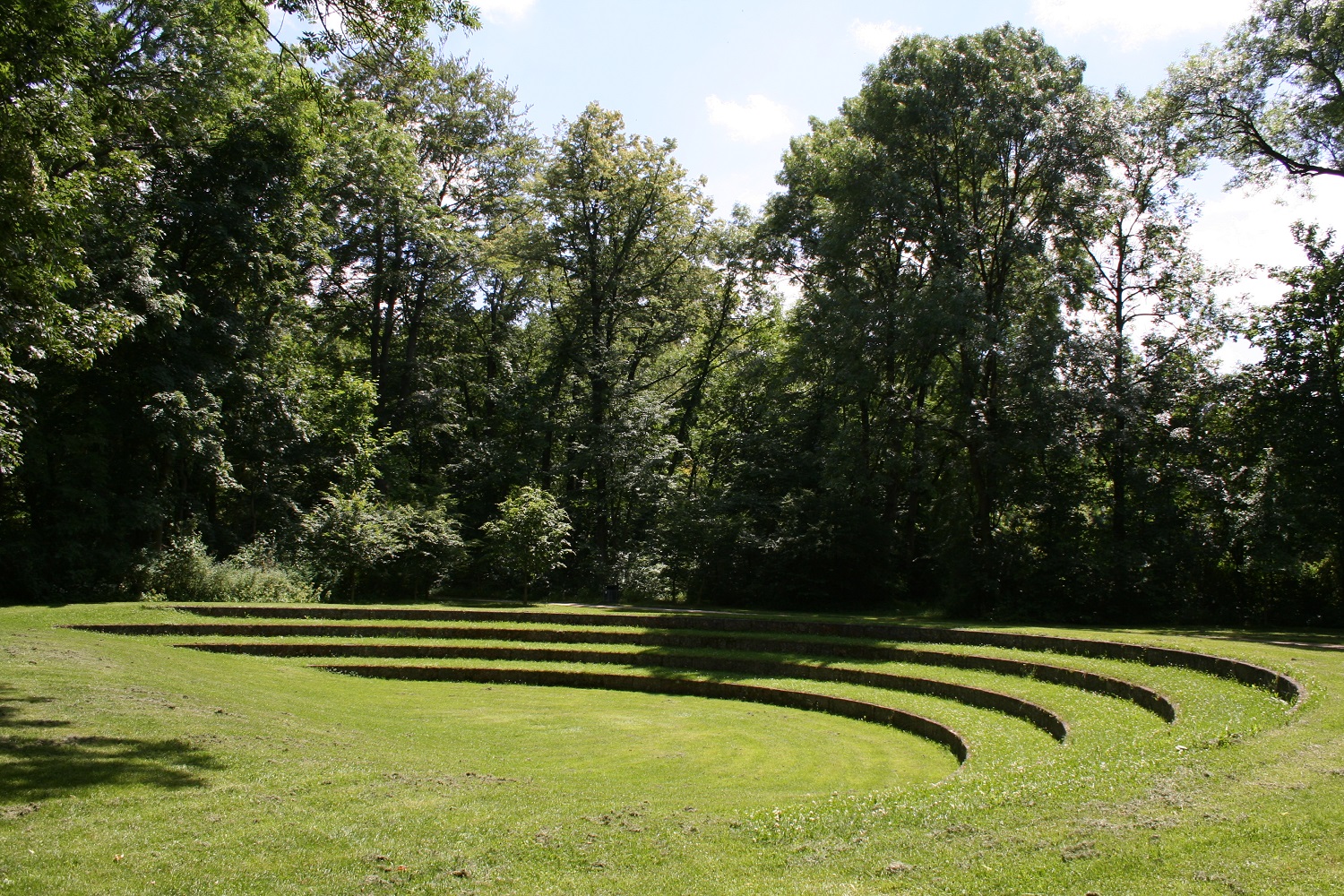he Englischer Garten, German for "English Garden", is a large public park in the centre of Munich, Bavaria, stretching from the city centre to the northeastern city limits. It was created in 1789 by Sir Benjamin Thompson (1753–1814), later Count Rumford (Reichsgraf von Rumford), for Prince Charles Theodore, Elector of Bavaria. Thompsons' successors, Reinhard von Werneck (1757–1842) and Friedrich Ludwig von Sckell (1750–1823), advisers on the project from its beginning, both extended and improved the park.
With an area of 3.7 km2 (1.4 sq mi) (370 ha or 910 acres), the Englischer Garten is one of Europe's largest urban public parks, larger than New York's Central Park. The name refers to its English garden form of informal landscape, a style popular in Britain from the mid-18th century to the early 19th century and particularly associated with Capability Brown.
When the Elector of Bavaria Maximilian III Joseph, the last ruler from the Bavarian branch of the Wittelsbach dynasty, died childless in 1777, the land passed to the Electorate of the Palatinate archduke and elector Carl Theodor. The new ruler preferred his home on the Rhine in Mannheim and tried unsuccessfully to trade this unwanted inheritance of Bavaria for the Austrian Netherlands. Understandably the people of Munich returned his dislike.To offset this unhappy atmosphere, Carl Theodor devoted much attention to improvements in the city. Among others, he created an art gallery in the northern arcades of the Residence's Hofgarten ("Court Garden"), and made both the garden and the gallery open to the public (the former in 1780, the latter in 1781).
The Rumford Monument in the park honours Sir Benjamin Thompson's contribution
While the Hofgarten was the only public park in Munich, it was not the primary motivation for creating the English Garden. Rather, it was part of a series of military reforms being pursued under the guidance of Sir Benjamin Thompson, his chief military aid, later made Count Rumford and Bavarian war minister. Born in Massachusetts, Thompson had served on the Loyalist side in the American Revolutionary War, and after the British defeat had returned first to England before moving to Europe and entering Carl Theodor's service in 1784. In 1788 Thompson proposed that in peacetime the majority of soldiers should be given leave to do civilian work such as farming and gardening. In February 1789, Carl Theodor decreed that military gardens should be laid out in each garrison city to provide soldiers with good agricultural knowledge and serve as recreation areas, accessible also to the public.
The planned location for the Munich gardens was the area north of the Schwabinger city gate, hunting grounds of the Wittelsbach rulers since the Middle Ages. Known as the Hirschanger (or "deer enclosure"), the higher part of the grounds closer to the city was included, while the Hirschau (also meaning "deer enclosure", lower and further north, was not originally part of the plan. Nor was a more densely wooded part to the south known as the Hirschangerwald. The whole area had been subject to flooding from Munich's river, the Isar, a little to the east. This problem was soon removed by the construction of a river wall in 1790, which became known as the "Riedl-Damm" after the engineer Anton von Riedl, who had supervised its construction.
The construction of the military garden was begun in July 1789, and an area of 800 by slightly less than 200 metres was quickly made ready for cultivation.[8] But soon the idea was extended to the creation of a public park, of which the military garden should be only a small part. On August 13, 1789, Carl Theodor published a decree, devoting the Hirschanger to the amusement of the people of Munich. To advise on the project, the Royal Gardener Friedrich Ludwig Sckell (von Sckell from his knighthood in 1808) who had studied landscape gardening in England and had previously worked for Carl Theodor at Schwetzingen, had been summoned to Munich earlier in August.Various associated projects were made part of the park development, among them the "Elevengarten", a garden for the pupils of the recently formed military academy, a "Schweizerey" (cattle farm), "Schäfery" (sheep farm) and "Ackerbauschule" (arable farming school) to improve farming techniques, and a "Vihearzneyschule" (veterinary school) for the treatment of cattle diseases. Most of these projects did not long survive the creation of the park, but the veterinary school went on to become what is now the Tierärztliche Fakultät (Veterinary Faculty) of the Ludwig-Maximilians-Universität. The gateway from 1790 can be seen at the Veterinärstraße entrance to the garden. The park was initially named "Theodors Park", but it very quickly became known by the descriptive name "The English Garden".By May, 1790 sufficient progress had been made to allow Carl Theodor to make an inspection tour; but it was first in the spring of 1792 that the park was officially opened to the approximately 40,000 citizens of Munich.
Thompson left Munich in 1798. His successor, Baron von Werneck, attempted to make the garden pay for itself through its agricultural use. To that end he expanded the park in December 1799 to encompass the Hirschau, which was improved to provide pasture. The fields of the military gardens were added to the Englischer Garten in January 1800. Werneck's improvements had been costly and in 1804 he was replaced by Sckell, who was given the post of Bayerischer Hofgärtenintendant ("Bavarian Court Garden Supervisor").Although Sckell had had a guiding role from the beginning, many aspects of the execution differed from his ideas, which he set out in a memorandum of 1807.His long supervision of the garden (1804–1823) was marked by a movement away from agricultural use and concentration on the landscape garden. For instance, two mills at the point where the Schwabingerbach (Schwabing stream) leaves the Eisbach (Ice stream) were removed and an artificial waterfall was created in 1814-1815.
Under Sckell, the park took on its modern form. The only significant addition since then was the creation of the hill for the Monopteros by his nephew Carl August Sckell, who succeeded him as director of the park. In the 20th century, there have been minor additions to the park, most notably the addition in 1952 of 30 hectares of land, where the locomotive factory of Joseph Anton von Maffei had stood, and in 1958-62 of a further 67 hectares from the Hirschauer Forst (Hirschau Wood). The century almost brought less welcome changes to the park. In the second world war, bombing damaged the Monopteros and destroyed the Chinesischer Turm, and 93,000 cubic metres of rubble were dumped in the Hirschanger. The area was only cleared in 1953, when a sports ground for schools was made in its place.(The park briefly had another sports ground, with the archery range that hosted the archery competitions for the 1972 Summer Olympics on the Werneckwiese by the Kleinhesseloher See.) Transport too has harmed the character of the garden, most notably with the construction in 1963 of the Isarring, part of Munich's central ring road, which divides the park just north of the Kleinhesseloher See. Towards the end of the century the city of Munich wished to construct a tram route through the garden north of the Chinese Tower, currently a road used only by buses; but it was opposed by the Bavarian government, which owns the land, and the Bayerische Verwaltungsgerichtshof rejected the plan. There were also natural disasters: many trees were destroyed by heavy storms in 1964, 1988 and 1990 (the "Wiebke" storm); Dutch elm disease has almost destroyed the elm population of the park. Both kinds of losses were compensated by a "tree donation" campaign organised by Munich's Abendzeitung ("Evening Paper") in 1989 to 1990 on the occasion of the park's 200 year anniversary; among the 1500 new trees that could be planted were 1000 elms, using only varieties resistant to Dutch elm disease.[












